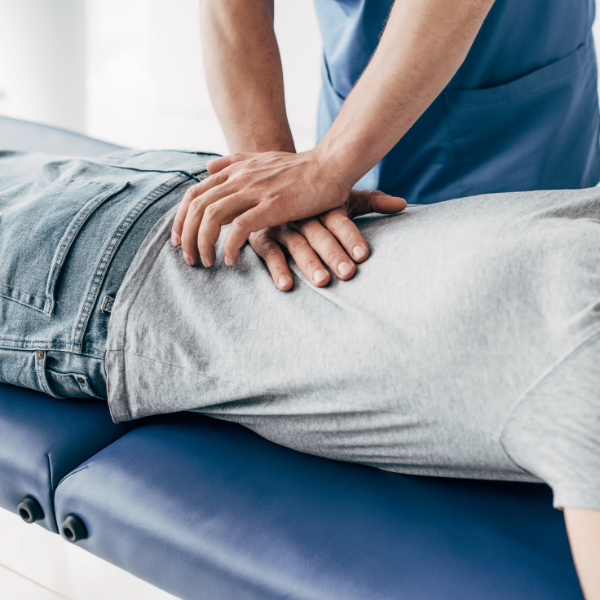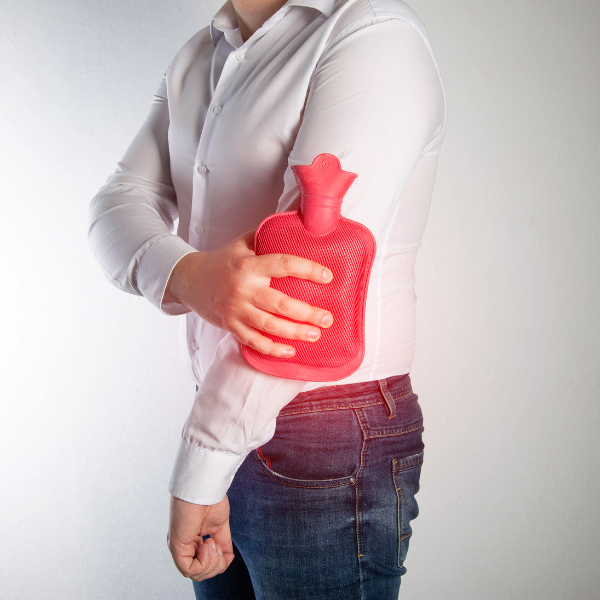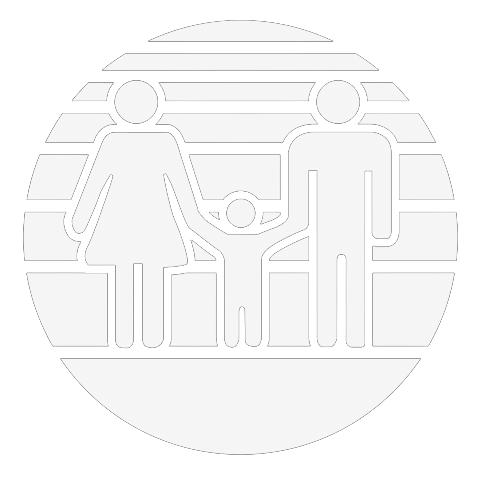Techniques & Therapies

Manual Therapy
Manual therapy, or manipulative therapy, is a hands-on treatment commonly utilized by chiropractors for musculoskeletal issues. It involves skilled manipulation of joints and soft tissues to alleviate pain and improve mobility. This type of therapy is especially effective for individuals suffering from conditions like back pain, neck pain, and joint stiffness. By targeting specific areas of the body, manual therapy can help restore proper alignment and function, leading to increased comfort and range of motion.
How Does Manual Therapy Work?
This form of physical therapy takes a hands-on approach rather than using devices or machines. When a chiropractor uses their hands during manual therapy, they apply pressure on the muscle tissue and maneuver the joints in an effort to reduce pain associated with muscle tension, muscle spasm and joint dysfunction.
How Does Manual Therapy Help?
Insufficient joint movement can cause pain, discomfort, and affect function, movement, and posture. This restriction can lead to stiffness and muscle weakness, impacting daily activities and overall well-being. Maintaining joint mobility through gentle exercises and stretching can help alleviate these issues and improve quality of life.
By incorporating manual therapy, one can experience several benefits such as improved range of motion, reduced soft tissue inflammation, pain management, relaxation, and enhancement of healing, stability, and flexibility in both contractile and non-contractile tissues.
These outcomes highlight the diverse advantages that manual therapy can offer in promoting physical well-being and overall health.
Types of Manual Therapy Movement
Manual therapy techniques encompass a variety of methods. They share the common goal of relieving tense muscles and improving joint mobility. Each technique offers unique benefits and can be tailored to address specific needs or conditions. By targeting muscle tension and joint restrictions, manual therapy plays a vital role in promoting overall wellness and alleviating discomfort. Overall, however, these procedures exercise three main types of movement:
- Manipulation. Sheer, rotational or agitated force that is rapid and results in an audible popping sound caused by the sudden breakdown of gas bubbles that develop during joint cavitation
- Massage. Recurring stripping, kneading or rubbing of the soft tissues for the purpose of redistributing fluid, relaxing muscles, increasing circulation, easing muscle tension, breaking up scar tissue and reducing pain
- Mobilization. Stretching the soft tissues in a slower, more regulated process in order to improve flexibility
When discussing mobilization and manipulation together, it's important to understand the distinction between the two techniques. Mobilization involves gentle movements of joints and tissues to improve flexibility and reduce pain. On the other hand, manipulation is a more forceful technique aimed at restoring joint function and alignment. While both have their place in chiropractic care, understanding when to use mobilization for gradual improvement and manipulation for more immediate results can be key in providing effective treatment. Our Doctors utilize a range of speeds and forces from slow to fast and moderate to strong to adjust joints and bones. These calculated movements help release stiff tissues and minimize joint pain effectively. This technique can help reestablish alignment, aiding in correcting posture and reducing strain on muscles and joints.
Types of Manual Therapy Techniques
Before performing manual therapy, chiropractors conduct a thorough assessment. This includes evaluating nerve and blood supply, as well as examining bones and muscles. Assessing these areas helps chiropractors understand the specific needs of the patient's body, allowing for more targeted and effective treatment. By identifying potential issues beforehand, chiropractors can tailor their manual therapy techniques to address the root causes of discomfort and promote healing. Based on the assessment, the chiropractor may utilize manual therapy techniques to address the patient's needs. These techniques could include spinal manipulation, soft tissue massage, or joint mobilization. The effectiveness of the physical therapy is determined by the initial assessment, guiding the chiropractor in selecting the most appropriate treatment for the patient.
These treatment options could include:
- Soft tissue mobilization. Through its intense pressure, deep tissue massage encourages the circulation of tissue fluids, aiding in the removal of toxins and promoting overall tissue health.
- Strain and counter-strain. Fixing irregular neuromuscular reflexes that trigger structural and postural problems is crucial for overall health. By addressing these issues, individuals can improve their body's alignment and functionality. This targeted approach can help alleviate pain and prevent further complications. In this method, our chiropractors identify the patient's tender points. Then, the patient indicates where the soreness reduces. This interactive approach helps tailor the treatment to the patient's specific needs.
The patient is then positioned comfortably for up to two minutes, allowing them to relax and acclimate to the treatment. This brief period of stillness can help the patient feel more at ease and prepare for the next steps in the procedure. During stretching, muscles are gently lengthened and then slowly released to reset to their natural tension level, promoting healing. This gentle process helps relax and realign muscles, aiding in recovery and overall muscle health. - Joint mobilization. By delivering slow speed and amped-up distance of movement, exercises can help loosen constrained joints and boost range of motion. This gentle approach can be particularly beneficial for individuals recovering from injuries or dealing with stiffness.
- Muscle energy technique. Can aid in quicker recovery after exercise. This technique involves gentle, active movements that can help improve blood flow and remove waste products from the muscles.
- High velocity, low amplitude thrusting. This approach involves quick, precise movements with minimal force applied to the spine. It is designed to target specific areas with speed and accuracy, making it effective for addressing joint restrictions and restoring proper alignment. This technique is favored for its ability to deliver effective adjustments with less discomfort for the patient.
Please contact us with any questions.

Drop-Table Technique
Not all back and neck issues require forceful spinal manipulation. Gentle techniques like mobilization, massage, or targeted exercises can effectively treat lower back, mid-back, and neck conditions without the need for forceful adjustments. These alternative methods can be just as beneficial and are often more suitable for individuals who may be hesitant about or unable to undergo forceful manipulation. Gentle chiropractic methods like drop table techniques involve slow, low-velocity movements that keep the affected joint within its passive range of motion. This approach reduces the risk of injury while still providing effective spinal adjustments. It can be particularly beneficial for individuals with sensitive areas or those who prefer a more subtle approach to chiropractic care.
How Does the Drop Table Technique Work?
The Thompson Technique, also referred to as the "drop" approach, employs a specialized chiropractic table with segments that can be raised and then released upon the application of a thrust by the chiropractor. This innovative method allows for precise adjustments to be made with controlled force, enhancing the effectiveness of the treatment. The use of the drop table in chiropractic care offers a unique and targeted approach that can benefit patients seeking spinal adjustments for various conditions.
The various raised sections of the table, ranging from 1 to 2 inches, offer specific benefits during chiropractic adjustments. These elevated areas can provide better access to certain body areas for examination or treatment, by lifting the section needed for adjustment. The section is then secured, after the chiropractor adjusts the rigidity of the section. After the rigidity is set, the doctor will then apply a gentle thrust, causing the table to release and drop down. During this drop, while utilizing the momentum of the body during the drop, the segment receiving the adjustment will fall into place.
What to Expect After a Drop Table Technique
The number of sessions required for improvement varies depending on the condition and its severity. Generally, patients should experience enhanced range of motion and reduced pain after each treatment. This progression reflects the effectiveness of the therapy and the patient's response to it.
To learn more about the drop table technique and how it can help, please contact our office.

Myofascial Release
Myofascial release treatment is a form of physical therapy often used to treat myofascial pain syndrome, a chronic pain disorder caused by sensitivity and tightness in your myofascial tissues. These tissues surround and support the muscles throughout your body. The pain usually originates from specific points within your myofascial tissues called "trigger points." Let's delve deeper into the benefits of myofascial release treatment and how it can help relieve myofascial pain symptoms.
What is Myofascial Tissue?
Before we can understand the benefits of myofascial release, it's essential to grasp what myofascial tissue is. Myofascial tissue, or fascia, is a dense, tough tissue that surrounds and covers all your muscles and bones. This connective tissue forms a web extending from your head to your toes. When it's healthy, the myofascial tissue is relaxed and soft. It has the capacity to stretch and move without restriction. However, when you experience physical trauma or inflammation, the myofascial tissue can become tight and restricted.
Diagnosis of Trigger Points
The diagnosis of trigger points is crucial in the treatment of myofascial pain. Trigger points are areas of muscle that are painful to palpation and are characterized by the presence of taut bands. Healthcare professionals can identify these points during a physical examination, and their location often correlates with the area of pain. Understanding the precise location of trigger points is essential for effective myofascial release treatment.
Myofascial Release Treatment
Myofascial release treatment involves applying gentle, sustained pressure into the myofascial connective tissue restrictions. The practitioner uses their hands to massage and stretch the fascia, aiming to alleviate tension and tightness. The goal is to eliminate pain and restore motion. This technique can be performed by a physical therapist, massage therapist, or other trained healthcare professional.
Benefits of Myofascial Release
The benefits of myofascial release are numerous. Patients often report a reduction in their myofascial pain symptoms, which includes persistent deep aching pains in muscles, tenderness in an area containing a trigger point, or pain that persists or worsens. Other benefits include:
- Increased blood circulation: By stretching and releasing the fascia, blood flow within the tissues is improved, which can speed up the healing process.
- Improved muscular range of motion: Restrictions in fascia can lead to decreased muscle flexibility and function. Myofascial release can help restore this.
- Reduction in muscle soreness: By working out the knots and tightness in the fascia, myofascial release can reduce overall body soreness.
- Enhanced strength and performance: When myofascial restrictions are released, muscles can function more effectively, potentially improving strength and athletic performance.
When to Seek Myofascial Release Treatment
If you're experiencing symptoms consistent with myofascial pain syndrome, such as persistent pain that does not improve with traditional treatment methods, it may be time to consider myofascial release treatment. It's important to work with a professional who has a thorough understanding of the anatomy and physiology of myofascial tissues to ensure effective treatment.
Remember, while myofascial release can be incredibly beneficial, it's just one component of a comprehensive treatment plan for myofascial pain syndrome. Other treatments may include physical therapy, medication, or stress management techniques. Always consult with a healthcare professional for a proper diagnosis and tailored treatment approach.
Understanding the benefits of the myofascial technique can be the first step towards finding relief from chronic pain and improving overall physical function.

Heat Therapy
Heat therapy, also known as thermotherapy, has been a source of relief for people suffering from muscle and joint pain for centuries. It is a simple yet effective treatment that can be used to improve health and well-being. In this article, we will explore the benefits of heat therapy, how it works, and the different types that are available.
What is Heat Therapy?
Heat therapy involves the application of heat to the body for pain relief and health enhancement. It can be delivered in various forms, including hot water bottles, heating pads, warm baths, and more advanced methods like ultrasound. The warmth from heat therapy increases blood flow, relaxes muscles, and can soothe discomfort.
How Heat Therapy Works
The application of heat to the body causes blood vessels in the treated area to dilate, enhancing circulation. This increased blood flow delivers fresh oxygen and nutrients to the tissues, helping to promote healing. Moreover, heat can reduce pain signals to the brain, offering immediate relief from discomfort.
Benefits of Heat Therapy
Heat therapy can be particularly beneficial for those with muscle stiffness, arthritis, or chronic pain. Here are some of the key benefits:
- Muscle Relaxation and Relief: Heat therapy helps to relax tight muscles and reduce muscle spasms, which can significantly relieve pain.
- Improved Flexibility: By relaxing muscles, heat therapy can also improve flexibility and overall range of motion, which is particularly helpful before exercise.
- Enhanced Healing: The increased circulation from heat therapy aids in the healing process by bringing more nutrients and oxygen to the affected areas.
- Pain Reduction: The warmth from heat therapy can decrease the sensation of pain, providing a comforting, analgesic effect.
Types of Heat Therapy
There are two primary types of heat therapy: dry heat and moist heat. Dry heat, such as electric heating pads and saunas, draws out moisture from the body and can feel more dehydrating. Moist heat, such as warm baths or steamed towels, is often more effective at penetrating deep into muscles and may provide better pain relief.
Choosing the Right Heat Therapy
When selecting the type of heat therapy to use, consider the following:
- Area of Pain: Larger areas may benefit from methods that cover more surface, like a heat wrap or a warm bath.
- Intensity of Heat: Some people prefer intense heat, while others may find more relief from gentle, moist warmth.
- Duration: Heat therapy can be applied for short bursts or for longer periods, depending on the level of pain and the method used.

Cold Therapy
Cold therapy, often referred to as cryotherapy, has long been a staple in the world of sports medicine and recovery. It is a method that involves the use of cold temperatures to treat injuries and promote faster healing. From athletes to individuals with chronic pain, cold therapy offers numerous benefits that can improve recovery times and overall wellbeing. Below, we explore the types of cold therapy available and share tips for achieving the best results.
Types of Cold Therapy
There are a variety of cold therapy methods available, each with its own set of advantages. Here are a few common types:
Ice Packs
The most basic form of cold therapy is the application of ice packs to the affected area. This method is both accessible and effective in reducing inflammation and numbing pain.
Ice Baths
Submerging the body, or a part of it, in ice water can help reduce muscle soreness and accelerate recovery after intense physical activity.
Cryotherapy Chambers
Whole-body cryotherapy involves standing in a chamber that surrounds the body with extremely cold air for several minutes. It's believed to help with a range of issues, from reducing inflammation to improving skin conditions.
Benefits of Cold Therapy
Cold therapy offers numerous health benefits, particularly when it comes to recovery:
Reduces Inflammation and Swelling
Cold temperatures constrict blood vessels, which can decrease inflammation and swelling in the treated area, providing relief from pain and speeding up the healing process.
Decreases Muscle Soreness
After vigorous exercise, cold therapy can help lessen delayed onset muscle soreness (DOMS), making it easier to get back to your workouts sooner.
Limits Nerve Activity
By slowing down nerve activity, cold therapy can provide significant pain relief for individuals suffering from chronic pain or acute injuries.
Tips for the Best Cold Therapy
To maximize the benefits of cold therapy, consider the following tips:
- Start with shorter sessions and gradually increase the duration as your body adapitates.
- Always have a protective barrier, such as a cloth or towel, between your skin and the cold source to prevent frostbite.
- Focus on the affected area but be mindful of the time—limit cold therapy sessions to 15-20 minutes to avoid damaging the skin or tissues.
- Combine cold therapy with other recovery techniques, such as compression and elevation, for comprehensive treatment.
